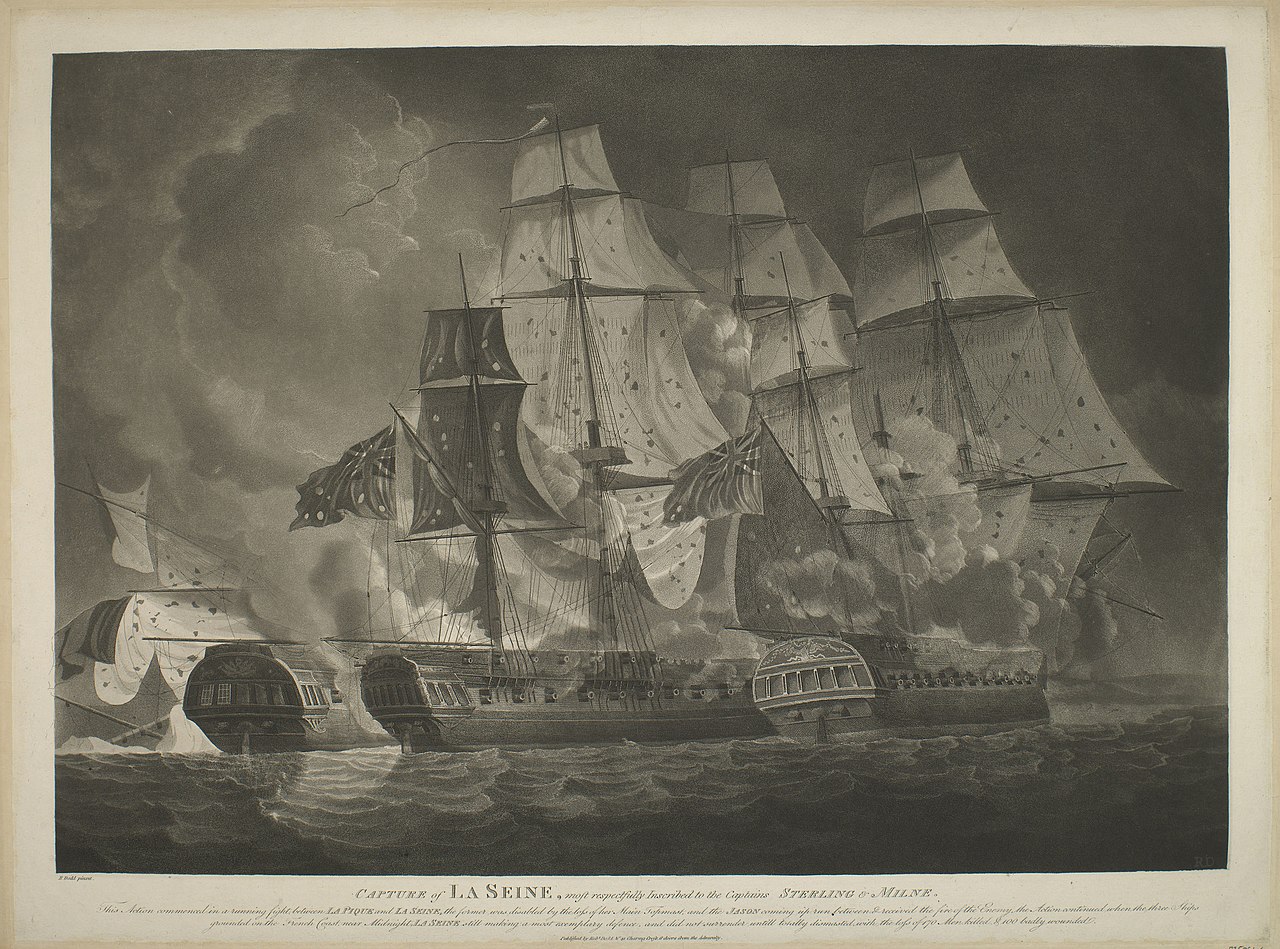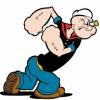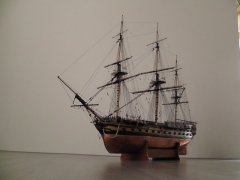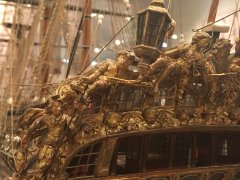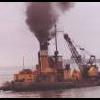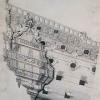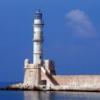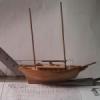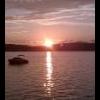-
Posts
2,245 -
Joined
-
Last visited
Reputation Activity
-
 Beef Wellington got a reaction from popeye the sailor in Bluebell by Kevin - Revel - 1/72 - PLASTIC - Flower-class corvette with GLS upgrade - restarted Jan 2022
Beef Wellington got a reaction from popeye the sailor in Bluebell by Kevin - Revel - 1/72 - PLASTIC - Flower-class corvette with GLS upgrade - restarted Jan 2022
Great result, night and day difference Kevin. I really need to develop my skill soldering as well...
-
 Beef Wellington got a reaction from Canute in Bluebell by Kevin - Revel - 1/72 - PLASTIC - Flower-class corvette with GLS upgrade - restarted Jan 2022
Beef Wellington got a reaction from Canute in Bluebell by Kevin - Revel - 1/72 - PLASTIC - Flower-class corvette with GLS upgrade - restarted Jan 2022
Great result, night and day difference Kevin. I really need to develop my skill soldering as well...
-
 Beef Wellington reacted to Kevin in Bluebell by Kevin - Revel - 1/72 - PLASTIC - Flower-class corvette with GLS upgrade - restarted Jan 2022
Beef Wellington reacted to Kevin in Bluebell by Kevin - Revel - 1/72 - PLASTIC - Flower-class corvette with GLS upgrade - restarted Jan 2022
i copied this idea and it never worked for me,
i have no idea what was supplied to me as 60/40 solder
since then i have changed it and the flux, and getting much better results
will post photo later of what i am using
-
 Beef Wellington reacted to Blue Ensign in HM Cutter Alert by Blue Ensign - FINISHED - Vanguard Models - 1:64 scale
Beef Wellington reacted to Blue Ensign in HM Cutter Alert by Blue Ensign - FINISHED - Vanguard Models - 1:64 scale
Post 14
Capping/Drift Rail (Part46)
Much as I liked the idea of the pre marked capping rails, when I came to fit them they just looked too broad to my eye. This would have been exacerbated by my desire to add even a very thin edging strip with a profile moulding cut into it.
1820
The provided strip measures 4.5mm wide which equates to 11.3". The scantlings table in the Alert book gives the Drift rail width of 7½" which equates to 3mm at scale.
I understand the over-scale width maybe a necessary simplification to incorporate the cut outs for the timberheads etc; and ease construction, but I have decided to go another route.
I recall that I had the same issue with the Pegasus kit where the Drift rails also had to be reduced in width.
1806(2)
For Alert I used Pear wood strip of 3x1mm which is a perfect fit for the drift rails, and add a moulding to the outside edge.
1812(2)
The provided rails may come in to use as a template to mark the cut out positions but for the dedicated kit basher they aren't really necessary as the positions are clearly marked on the plans.
New Paint job.
I wasn't really happy with the shade of blue I first painted the topsides with. On reflection it looked too bright, somehow at odds with the red internal scheme, perhaps too modern looking. These things are hard to pin down.
The revised scheme is based on Humbrol Matt 96 which is RAF Blue. At a pinch I think you could get away with this on its own, it has a muted dusky blue/grey tone.
1800(2)
However, I thought it needed making slightly paler and a tad brighter. To achieve this I added white paint by degrees, testing each sample, until I arrived at the final shade I was happy with.
1811
1816
That's it for the outboard work for the present.
To reach this point has taken some seven weeks of fairly regular work time. Amusing to think how many models Chris Watton has completed in this time, I think he must have an army of Elves down in the Forest of Dean working night shifts.
I will now attend to planking the deck before I begin tinkering with the clinkering on the lower hull.
B.E.
16/08/2019
-
 Beef Wellington got a reaction from mtaylor in Black Pearl by Old Collingwood - FINISHED - 1/72 Scale
Beef Wellington got a reaction from mtaylor in Black Pearl by Old Collingwood - FINISHED - 1/72 Scale
Looks great!
-
 Beef Wellington got a reaction from EJ_L in Black Pearl by Old Collingwood - FINISHED - 1/72 Scale
Beef Wellington got a reaction from EJ_L in Black Pearl by Old Collingwood - FINISHED - 1/72 Scale
Looks great!
-
 Beef Wellington got a reaction from popeye the sailor in Black Pearl by Old Collingwood - FINISHED - 1/72 Scale
Beef Wellington got a reaction from popeye the sailor in Black Pearl by Old Collingwood - FINISHED - 1/72 Scale
Looks great!
-
 Beef Wellington reacted to Old Collingwood in Black Pearl by Old Collingwood - FINISHED - 1/72 Scale
Beef Wellington reacted to Old Collingwood in Black Pearl by Old Collingwood - FINISHED - 1/72 Scale
I have a new home for the pearl and others built, I had to diss-assemble and re-assemble it yesterday, it is a mainly glass unit with a wood back - top and bottom, I have a few more kits to be built that will share the space when ready.
OC.
-
 Beef Wellington reacted to Peta_V in AVOS by Peta_V - FINISHED - Master Korabel - scale 1/72 (exclusive kit) - Russian tender
Beef Wellington reacted to Peta_V in AVOS by Peta_V - FINISHED - Master Korabel - scale 1/72 (exclusive kit) - Russian tender
Windlas part2. Everything went fine to this stage. Time consuming as there are lot of pieces but smooth process.
Until this small detail came. It is so tiny and will be made from 10pieces. Nice test for the nerves
-
 Beef Wellington reacted to Kevin in Bluebell by Kevin - Revel - 1/72 - PLASTIC - Flower-class corvette with GLS upgrade - restarted Jan 2022
Beef Wellington reacted to Kevin in Bluebell by Kevin - Revel - 1/72 - PLASTIC - Flower-class corvette with GLS upgrade - restarted Jan 2022
after the disastrous first week of the build, i have made a few conclusions
i was totally overwhelmed by the amount of shiny stuff, in the addons, everything had to be opened and played with, im sure others can relate to this
Soldering, is my way ahead for this build, no i didn't know haw to do it and never had the right stuff, now sorted and will show in a later post
the hull
having made up the 4 sections the keel has to be removed and fared into the plates at the bow, also the hull plates are to thick and porthole eyebrows need to be gone,
a bulk of the work has now been done
but many more hours still required to make it presentable
-
 Beef Wellington reacted to Candice in HMAV Bounty by Candice - Caldercraft - Scale 1:64
Beef Wellington reacted to Candice in HMAV Bounty by Candice - Caldercraft - Scale 1:64
Thanks so much for the advice!!
Jason, I really like your idea of the rabett at the bow! If I build another ship, I'll definitely consider using it, or trying to figure out filler blocks. I imagine that they would do similarly, Henrik, but I felt that was too far beyond my non-existent wood-working ability to try this time.
I did do some bearding on the false keel, but found out after my first planking that I didn't do nearly enough! I've therefore sanded down the planks at the stern as well to try make up for it.
This is after sanding down one side of the stern planks to show the contrast.
Thank you for the confirmation about fixing the dip; I went ahead with the lime plank fillers.
The result wasn't too bad
On the right side they worked really well!
On the left I didn't make them quite long enough so they end a little suddenly with a slight dip, but the walnut planks should have a good enough surface to curve over the remaining defect.
To answer your question, Henrik, my instructions said to go deck down but I was warned that I could run into lots of problems doing it that way with the curvature of the Bounty's hull. I therefore chose to ignore the instructions;P. I'd have to try again the other way around to know for sure which way was better though. Below are more before-sanding close-ups to give a better idea of what I did at the stern. The left ended up being different to the right as I was salvaging planks that I'd cut months ago in ignorance. (I ended up with only a single full plank to spare so was happy I had!) On the right side, the planks that terminated underneath bulkhead 12 were full width the whole way with a stealer to make up the difference. The planks terminating on the upper false keel tapered quite a lot by the 11th bulkhead; I even had to drop a plank. I then did something that may constitute cheating between the 11th bulkhead to the false keel: I cut the planks to widen again:0. I don't know how legit that is but it seemed to work pretty well!
On the left side, all bar one of the planks terminating on the false keel in that problem strip were tapered all the way (one I widened again after bulkhead 11). Then all the planks ending under bulkhead 12 tapered a little over 9,10 and 11, then widened out to 12. I didn't end up dropping a plank or needing a stealer this side. Weird, I know, but it worked and still looks sufficiently symmetrical;P!
Back to the present! I have finished sanding the hull. It's a process that really makes you acutely aware of all your planking imperfections! Next up, second planking!
-
 Beef Wellington got a reaction from Sjors in HMS Jason by Beef Wellington - Caldercraft - 1:64 - Artois-class frigate modified from HMS Diana 1794
Beef Wellington got a reaction from Sjors in HMS Jason by Beef Wellington - Caldercraft - 1:64 - Artois-class frigate modified from HMS Diana 1794
Quick update. Increasingly realizing I'm reaching a point that I need to attach the upper false foc's'l and quarter deck template before more progress can be made, but a couple of items I need to finalize and figure out first.
Main and mizzen backstay stools:
Unfortunately when I made the channels I neglected to make the stools at the same time, In a moment of focus decided to just get these done. These smaller items were definitely trickier than the channels when scraping the edge profile, other than that, these can be put aside for when I'm ready to install the quarterdeck drift rail.
Upper deck coamings:
As mentioned previously, I'd like to keep the option to have a few of the gratings be removeable. First off, appropriately sized gratings were made up, and the coamings then sized accordingly. I cheated here and used a simple butt joint as I didn't think the more authentic lap joint would really be visible. These were made of 3x3mm strip and 2x3mm strip with the inside ledge added after with some slightly thinned 1mm strip. The grating thickness had to be thinned quite a bit to make it them sit flush. These will also be simulating actual practice and so the edges were rounded off to 1mm above the bottom to butt up against planking. TFFM was used as a guide here.
Once the coamings were finished, the fake beams and cross pieces could be made up to the appropriate size. The ends were sloped to ensure that the end of the face beam would not be visible for viewing angles.
Adjustments were made to the false deck to accommodate the larger openings and positions tweaked a little. For the foc's'l, the coaming size does not match the deck cut-out or AOTS exactly due to the limited incremental options for the grating size. The stove flue needs to sit equidistant between the steam grate and the forward grating which moved forward slightly. The steam grating needs to be positioned appropriately to allow the belfy to sit on the aft end of the steam grate coaming.
The top tackle scuttles have been filled in to ease future planking - the instructions indicate that there should be coamings and gratings here, however, these will be modeled as flush scuppers without a coaming as described in AOTS and shown on contemporary models. Although the surface of the center deck is very slightly curved, it is a close enough approximation to a flat surface that the flat top of the fake frame seem to sit without issue. Lighting is clearly an issue here, and the interior is a little more visible than the photo's suggest, and probably more so in a well lit room.
Of note is the fact that the stove, and especially the condenser, sits a little higher than ideally would be the case, although looking at the AOTS diagrams its still a tight fit there as well. In retrospect, I would probably not have put wooden battens underneath the bottom plate to lower this by 1mm or so, but not going to risk damage at this point to redo.
Putting some scrap planking in place give a better sense for the final proportion and the above deck rounded edge. Think these will be a nice contrast to the much higher coamings of the exposed upper deck below needed to withstand water ingress.
-
 Beef Wellington got a reaction from daHeld73 in HMS Bellona 1760 by SJSoane - Scale 1:64 - English 74-gun - as designed
Beef Wellington got a reaction from daHeld73 in HMS Bellona 1760 by SJSoane - Scale 1:64 - English 74-gun - as designed
Hi Mark, I'm not very adventurous with colors, so have stuck to the Admiralty paints red and yellow ochre. I like the look of them, but of course colour preference is a very personal thing. I used the technique Druxey outlined, sealing the outside planking, painting carefully and then simply scraping off any excess - worked pretty well.
-
 Beef Wellington got a reaction from daHeld73 in HMS Bellona 1760 by SJSoane - Scale 1:64 - English 74-gun - as designed
Beef Wellington got a reaction from daHeld73 in HMS Bellona 1760 by SJSoane - Scale 1:64 - English 74-gun - as designed
That's a really nice result Mark, looks great from here!
-
 Beef Wellington got a reaction from clearway in HMS Jason by Beef Wellington - Caldercraft - 1:64 - Artois-class frigate modified from HMS Diana 1794
Beef Wellington got a reaction from clearway in HMS Jason by Beef Wellington - Caldercraft - 1:64 - Artois-class frigate modified from HMS Diana 1794
Quick update. Increasingly realizing I'm reaching a point that I need to attach the upper false foc's'l and quarter deck template before more progress can be made, but a couple of items I need to finalize and figure out first.
Main and mizzen backstay stools:
Unfortunately when I made the channels I neglected to make the stools at the same time, In a moment of focus decided to just get these done. These smaller items were definitely trickier than the channels when scraping the edge profile, other than that, these can be put aside for when I'm ready to install the quarterdeck drift rail.
Upper deck coamings:
As mentioned previously, I'd like to keep the option to have a few of the gratings be removeable. First off, appropriately sized gratings were made up, and the coamings then sized accordingly. I cheated here and used a simple butt joint as I didn't think the more authentic lap joint would really be visible. These were made of 3x3mm strip and 2x3mm strip with the inside ledge added after with some slightly thinned 1mm strip. The grating thickness had to be thinned quite a bit to make it them sit flush. These will also be simulating actual practice and so the edges were rounded off to 1mm above the bottom to butt up against planking. TFFM was used as a guide here.
Once the coamings were finished, the fake beams and cross pieces could be made up to the appropriate size. The ends were sloped to ensure that the end of the face beam would not be visible for viewing angles.
Adjustments were made to the false deck to accommodate the larger openings and positions tweaked a little. For the foc's'l, the coaming size does not match the deck cut-out or AOTS exactly due to the limited incremental options for the grating size. The stove flue needs to sit equidistant between the steam grate and the forward grating which moved forward slightly. The steam grating needs to be positioned appropriately to allow the belfy to sit on the aft end of the steam grate coaming.
The top tackle scuttles have been filled in to ease future planking - the instructions indicate that there should be coamings and gratings here, however, these will be modeled as flush scuppers without a coaming as described in AOTS and shown on contemporary models. Although the surface of the center deck is very slightly curved, it is a close enough approximation to a flat surface that the flat top of the fake frame seem to sit without issue. Lighting is clearly an issue here, and the interior is a little more visible than the photo's suggest, and probably more so in a well lit room.
Of note is the fact that the stove, and especially the condenser, sits a little higher than ideally would be the case, although looking at the AOTS diagrams its still a tight fit there as well. In retrospect, I would probably not have put wooden battens underneath the bottom plate to lower this by 1mm or so, but not going to risk damage at this point to redo.
Putting some scrap planking in place give a better sense for the final proportion and the above deck rounded edge. Think these will be a nice contrast to the much higher coamings of the exposed upper deck below needed to withstand water ingress.
-
 Beef Wellington got a reaction from Hubac's Historian in HMS Bellona 1760 by SJSoane - Scale 1:64 - English 74-gun - as designed
Beef Wellington got a reaction from Hubac's Historian in HMS Bellona 1760 by SJSoane - Scale 1:64 - English 74-gun - as designed
Hi Mark, I'm not very adventurous with colors, so have stuck to the Admiralty paints red and yellow ochre. I like the look of them, but of course colour preference is a very personal thing. I used the technique Druxey outlined, sealing the outside planking, painting carefully and then simply scraping off any excess - worked pretty well.
-
 Beef Wellington got a reaction from mtaylor in HMS Bellona 1760 by SJSoane - Scale 1:64 - English 74-gun - as designed
Beef Wellington got a reaction from mtaylor in HMS Bellona 1760 by SJSoane - Scale 1:64 - English 74-gun - as designed
Hi Mark, I'm not very adventurous with colors, so have stuck to the Admiralty paints red and yellow ochre. I like the look of them, but of course colour preference is a very personal thing. I used the technique Druxey outlined, sealing the outside planking, painting carefully and then simply scraping off any excess - worked pretty well.
-
 Beef Wellington got a reaction from Hubac's Historian in HMS Bellona 1760 by SJSoane - Scale 1:64 - English 74-gun - as designed
Beef Wellington got a reaction from Hubac's Historian in HMS Bellona 1760 by SJSoane - Scale 1:64 - English 74-gun - as designed
That's a really nice result Mark, looks great from here!
-
 Beef Wellington reacted to SJSoane in HMS Bellona 1760 by SJSoane - Scale 1:64 - English 74-gun - as designed
Beef Wellington reacted to SJSoane in HMS Bellona 1760 by SJSoane - Scale 1:64 - English 74-gun - as designed
I discovered this morning that I had two old jars of Caboose Red, one was PolyScale acrylic, the other Floquil enamel. The PolyScale was too red, bu the Floquil was perfect. I tried 100% paint, and then diluted 50-50 with thinner. The diluted looked a little more like the stain, and this is what I tried on my mockup. But the paint ran a bit. I did manage to scrape and sand away the overflow, so it did not seem to get into the deeper grains as the stain does. So, I might be in business here. I may try undiluted paint, which I imagine will run less, but will be brighter next to the stain.
Mark
-
 Beef Wellington got a reaction from KARAVOKIRIS in HMS Jason by Beef Wellington - Caldercraft - 1:64 - Artois-class frigate modified from HMS Diana 1794
Beef Wellington got a reaction from KARAVOKIRIS in HMS Jason by Beef Wellington - Caldercraft - 1:64 - Artois-class frigate modified from HMS Diana 1794
Quick update. Increasingly realizing I'm reaching a point that I need to attach the upper false foc's'l and quarter deck template before more progress can be made, but a couple of items I need to finalize and figure out first.
Main and mizzen backstay stools:
Unfortunately when I made the channels I neglected to make the stools at the same time, In a moment of focus decided to just get these done. These smaller items were definitely trickier than the channels when scraping the edge profile, other than that, these can be put aside for when I'm ready to install the quarterdeck drift rail.
Upper deck coamings:
As mentioned previously, I'd like to keep the option to have a few of the gratings be removeable. First off, appropriately sized gratings were made up, and the coamings then sized accordingly. I cheated here and used a simple butt joint as I didn't think the more authentic lap joint would really be visible. These were made of 3x3mm strip and 2x3mm strip with the inside ledge added after with some slightly thinned 1mm strip. The grating thickness had to be thinned quite a bit to make it them sit flush. These will also be simulating actual practice and so the edges were rounded off to 1mm above the bottom to butt up against planking. TFFM was used as a guide here.
Once the coamings were finished, the fake beams and cross pieces could be made up to the appropriate size. The ends were sloped to ensure that the end of the face beam would not be visible for viewing angles.
Adjustments were made to the false deck to accommodate the larger openings and positions tweaked a little. For the foc's'l, the coaming size does not match the deck cut-out or AOTS exactly due to the limited incremental options for the grating size. The stove flue needs to sit equidistant between the steam grate and the forward grating which moved forward slightly. The steam grating needs to be positioned appropriately to allow the belfy to sit on the aft end of the steam grate coaming.
The top tackle scuttles have been filled in to ease future planking - the instructions indicate that there should be coamings and gratings here, however, these will be modeled as flush scuppers without a coaming as described in AOTS and shown on contemporary models. Although the surface of the center deck is very slightly curved, it is a close enough approximation to a flat surface that the flat top of the fake frame seem to sit without issue. Lighting is clearly an issue here, and the interior is a little more visible than the photo's suggest, and probably more so in a well lit room.
Of note is the fact that the stove, and especially the condenser, sits a little higher than ideally would be the case, although looking at the AOTS diagrams its still a tight fit there as well. In retrospect, I would probably not have put wooden battens underneath the bottom plate to lower this by 1mm or so, but not going to risk damage at this point to redo.
Putting some scrap planking in place give a better sense for the final proportion and the above deck rounded edge. Think these will be a nice contrast to the much higher coamings of the exposed upper deck below needed to withstand water ingress.
-
 Beef Wellington reacted to Blue Ensign in HM Cutter Alert by Blue Ensign - FINISHED - Vanguard Models - 1:64 scale
Beef Wellington reacted to Blue Ensign in HM Cutter Alert by Blue Ensign - FINISHED - Vanguard Models - 1:64 scale
Post 13
Laying down some paint.
Having taken a minimalistic approach to paint on my Cheerful build, with this model I am going to broadly follow the paint scheme as indicated in the Alert Book.
I am using Vallejo Flat Red 031 for the internal paintwork, as I did with Cheerful.
1716(2)
This is a good point to coat the internal bulwarks and internal faces of the ports.
1719
Once the spirketting had been painted I added the Waterway using 1/32" Boxwood square stock.
For the stern and topsides the suggested Humbrol Matt Blue(25) is a tad too dark for my taste.
1770(2)
I concocted my own mix based on the formula I used for Pegasus.
The base paint is Humbrol Matt 89 (Middle Blue) to which Matt 25 (Matt Blue) and Matt 27 (sea Grey) and are added.
The proportions are roughly 60% (89) 30% (25) 10% (27)
1769(2)
Still not entirely convinced that I've got the shade right yet, but this is ok for a base coat.
Mouldings and rails
There are mouldings across the stern at Counter, Transom and Tafferal.
1721
I used 1/16th Boxwood strip for the purpose thinned down a little. These are much enhanced by scribing a simple relief using a razor blade cut pattern.
1718
For the Sheer rail which runs beneath the gun ports the kit indicates using plain 1mm x 1mm strip. I used a tad wider Boxwood stuff and as with the stern rails I scribed a profile on the face.
The kit paint scheme indicates this be painted black, but I prefer to leave it bright.
I rather liked the look of treenails on my Cheerful model. After some thought I decided to add the treenails along the broadside above the wale.
1759(4)
Taking the arrangement from the Alert book drawings, I used a 0.6mm micro drill and filled the holes using a filler mix.
Not very distinct but that's how they should be.
A coat of wipe-on poly is applied to seal the surface.
B.E.
14/08/2019
-
 Beef Wellington got a reaction from Ronald-V in HMS Jason by Beef Wellington - Caldercraft - 1:64 - Artois-class frigate modified from HMS Diana 1794
Beef Wellington got a reaction from Ronald-V in HMS Jason by Beef Wellington - Caldercraft - 1:64 - Artois-class frigate modified from HMS Diana 1794
Quick update. Increasingly realizing I'm reaching a point that I need to attach the upper false foc's'l and quarter deck template before more progress can be made, but a couple of items I need to finalize and figure out first.
Main and mizzen backstay stools:
Unfortunately when I made the channels I neglected to make the stools at the same time, In a moment of focus decided to just get these done. These smaller items were definitely trickier than the channels when scraping the edge profile, other than that, these can be put aside for when I'm ready to install the quarterdeck drift rail.
Upper deck coamings:
As mentioned previously, I'd like to keep the option to have a few of the gratings be removeable. First off, appropriately sized gratings were made up, and the coamings then sized accordingly. I cheated here and used a simple butt joint as I didn't think the more authentic lap joint would really be visible. These were made of 3x3mm strip and 2x3mm strip with the inside ledge added after with some slightly thinned 1mm strip. The grating thickness had to be thinned quite a bit to make it them sit flush. These will also be simulating actual practice and so the edges were rounded off to 1mm above the bottom to butt up against planking. TFFM was used as a guide here.
Once the coamings were finished, the fake beams and cross pieces could be made up to the appropriate size. The ends were sloped to ensure that the end of the face beam would not be visible for viewing angles.
Adjustments were made to the false deck to accommodate the larger openings and positions tweaked a little. For the foc's'l, the coaming size does not match the deck cut-out or AOTS exactly due to the limited incremental options for the grating size. The stove flue needs to sit equidistant between the steam grate and the forward grating which moved forward slightly. The steam grating needs to be positioned appropriately to allow the belfy to sit on the aft end of the steam grate coaming.
The top tackle scuttles have been filled in to ease future planking - the instructions indicate that there should be coamings and gratings here, however, these will be modeled as flush scuppers without a coaming as described in AOTS and shown on contemporary models. Although the surface of the center deck is very slightly curved, it is a close enough approximation to a flat surface that the flat top of the fake frame seem to sit without issue. Lighting is clearly an issue here, and the interior is a little more visible than the photo's suggest, and probably more so in a well lit room.
Of note is the fact that the stove, and especially the condenser, sits a little higher than ideally would be the case, although looking at the AOTS diagrams its still a tight fit there as well. In retrospect, I would probably not have put wooden battens underneath the bottom plate to lower this by 1mm or so, but not going to risk damage at this point to redo.
Putting some scrap planking in place give a better sense for the final proportion and the above deck rounded edge. Think these will be a nice contrast to the much higher coamings of the exposed upper deck below needed to withstand water ingress.
-
 Beef Wellington got a reaction from cog in HMS Jason by Beef Wellington - Caldercraft - 1:64 - Artois-class frigate modified from HMS Diana 1794
Beef Wellington got a reaction from cog in HMS Jason by Beef Wellington - Caldercraft - 1:64 - Artois-class frigate modified from HMS Diana 1794
Quick update. Increasingly realizing I'm reaching a point that I need to attach the upper false foc's'l and quarter deck template before more progress can be made, but a couple of items I need to finalize and figure out first.
Main and mizzen backstay stools:
Unfortunately when I made the channels I neglected to make the stools at the same time, In a moment of focus decided to just get these done. These smaller items were definitely trickier than the channels when scraping the edge profile, other than that, these can be put aside for when I'm ready to install the quarterdeck drift rail.
Upper deck coamings:
As mentioned previously, I'd like to keep the option to have a few of the gratings be removeable. First off, appropriately sized gratings were made up, and the coamings then sized accordingly. I cheated here and used a simple butt joint as I didn't think the more authentic lap joint would really be visible. These were made of 3x3mm strip and 2x3mm strip with the inside ledge added after with some slightly thinned 1mm strip. The grating thickness had to be thinned quite a bit to make it them sit flush. These will also be simulating actual practice and so the edges were rounded off to 1mm above the bottom to butt up against planking. TFFM was used as a guide here.
Once the coamings were finished, the fake beams and cross pieces could be made up to the appropriate size. The ends were sloped to ensure that the end of the face beam would not be visible for viewing angles.
Adjustments were made to the false deck to accommodate the larger openings and positions tweaked a little. For the foc's'l, the coaming size does not match the deck cut-out or AOTS exactly due to the limited incremental options for the grating size. The stove flue needs to sit equidistant between the steam grate and the forward grating which moved forward slightly. The steam grating needs to be positioned appropriately to allow the belfy to sit on the aft end of the steam grate coaming.
The top tackle scuttles have been filled in to ease future planking - the instructions indicate that there should be coamings and gratings here, however, these will be modeled as flush scuppers without a coaming as described in AOTS and shown on contemporary models. Although the surface of the center deck is very slightly curved, it is a close enough approximation to a flat surface that the flat top of the fake frame seem to sit without issue. Lighting is clearly an issue here, and the interior is a little more visible than the photo's suggest, and probably more so in a well lit room.
Of note is the fact that the stove, and especially the condenser, sits a little higher than ideally would be the case, although looking at the AOTS diagrams its still a tight fit there as well. In retrospect, I would probably not have put wooden battens underneath the bottom plate to lower this by 1mm or so, but not going to risk damage at this point to redo.
Putting some scrap planking in place give a better sense for the final proportion and the above deck rounded edge. Think these will be a nice contrast to the much higher coamings of the exposed upper deck below needed to withstand water ingress.
-
 Beef Wellington got a reaction from usedtosail in HMS Jason by Beef Wellington - Caldercraft - 1:64 - Artois-class frigate modified from HMS Diana 1794
Beef Wellington got a reaction from usedtosail in HMS Jason by Beef Wellington - Caldercraft - 1:64 - Artois-class frigate modified from HMS Diana 1794
Quick update. Increasingly realizing I'm reaching a point that I need to attach the upper false foc's'l and quarter deck template before more progress can be made, but a couple of items I need to finalize and figure out first.
Main and mizzen backstay stools:
Unfortunately when I made the channels I neglected to make the stools at the same time, In a moment of focus decided to just get these done. These smaller items were definitely trickier than the channels when scraping the edge profile, other than that, these can be put aside for when I'm ready to install the quarterdeck drift rail.
Upper deck coamings:
As mentioned previously, I'd like to keep the option to have a few of the gratings be removeable. First off, appropriately sized gratings were made up, and the coamings then sized accordingly. I cheated here and used a simple butt joint as I didn't think the more authentic lap joint would really be visible. These were made of 3x3mm strip and 2x3mm strip with the inside ledge added after with some slightly thinned 1mm strip. The grating thickness had to be thinned quite a bit to make it them sit flush. These will also be simulating actual practice and so the edges were rounded off to 1mm above the bottom to butt up against planking. TFFM was used as a guide here.
Once the coamings were finished, the fake beams and cross pieces could be made up to the appropriate size. The ends were sloped to ensure that the end of the face beam would not be visible for viewing angles.
Adjustments were made to the false deck to accommodate the larger openings and positions tweaked a little. For the foc's'l, the coaming size does not match the deck cut-out or AOTS exactly due to the limited incremental options for the grating size. The stove flue needs to sit equidistant between the steam grate and the forward grating which moved forward slightly. The steam grating needs to be positioned appropriately to allow the belfy to sit on the aft end of the steam grate coaming.
The top tackle scuttles have been filled in to ease future planking - the instructions indicate that there should be coamings and gratings here, however, these will be modeled as flush scuppers without a coaming as described in AOTS and shown on contemporary models. Although the surface of the center deck is very slightly curved, it is a close enough approximation to a flat surface that the flat top of the fake frame seem to sit without issue. Lighting is clearly an issue here, and the interior is a little more visible than the photo's suggest, and probably more so in a well lit room.
Of note is the fact that the stove, and especially the condenser, sits a little higher than ideally would be the case, although looking at the AOTS diagrams its still a tight fit there as well. In retrospect, I would probably not have put wooden battens underneath the bottom plate to lower this by 1mm or so, but not going to risk damage at this point to redo.
Putting some scrap planking in place give a better sense for the final proportion and the above deck rounded edge. Think these will be a nice contrast to the much higher coamings of the exposed upper deck below needed to withstand water ingress.
-
 Beef Wellington got a reaction from Ferit in HMS Jason by Beef Wellington - Caldercraft - 1:64 - Artois-class frigate modified from HMS Diana 1794
Beef Wellington got a reaction from Ferit in HMS Jason by Beef Wellington - Caldercraft - 1:64 - Artois-class frigate modified from HMS Diana 1794
Quick update. Increasingly realizing I'm reaching a point that I need to attach the upper false foc's'l and quarter deck template before more progress can be made, but a couple of items I need to finalize and figure out first.
Main and mizzen backstay stools:
Unfortunately when I made the channels I neglected to make the stools at the same time, In a moment of focus decided to just get these done. These smaller items were definitely trickier than the channels when scraping the edge profile, other than that, these can be put aside for when I'm ready to install the quarterdeck drift rail.
Upper deck coamings:
As mentioned previously, I'd like to keep the option to have a few of the gratings be removeable. First off, appropriately sized gratings were made up, and the coamings then sized accordingly. I cheated here and used a simple butt joint as I didn't think the more authentic lap joint would really be visible. These were made of 3x3mm strip and 2x3mm strip with the inside ledge added after with some slightly thinned 1mm strip. The grating thickness had to be thinned quite a bit to make it them sit flush. These will also be simulating actual practice and so the edges were rounded off to 1mm above the bottom to butt up against planking. TFFM was used as a guide here.
Once the coamings were finished, the fake beams and cross pieces could be made up to the appropriate size. The ends were sloped to ensure that the end of the face beam would not be visible for viewing angles.
Adjustments were made to the false deck to accommodate the larger openings and positions tweaked a little. For the foc's'l, the coaming size does not match the deck cut-out or AOTS exactly due to the limited incremental options for the grating size. The stove flue needs to sit equidistant between the steam grate and the forward grating which moved forward slightly. The steam grating needs to be positioned appropriately to allow the belfy to sit on the aft end of the steam grate coaming.
The top tackle scuttles have been filled in to ease future planking - the instructions indicate that there should be coamings and gratings here, however, these will be modeled as flush scuppers without a coaming as described in AOTS and shown on contemporary models. Although the surface of the center deck is very slightly curved, it is a close enough approximation to a flat surface that the flat top of the fake frame seem to sit without issue. Lighting is clearly an issue here, and the interior is a little more visible than the photo's suggest, and probably more so in a well lit room.
Of note is the fact that the stove, and especially the condenser, sits a little higher than ideally would be the case, although looking at the AOTS diagrams its still a tight fit there as well. In retrospect, I would probably not have put wooden battens underneath the bottom plate to lower this by 1mm or so, but not going to risk damage at this point to redo.
Putting some scrap planking in place give a better sense for the final proportion and the above deck rounded edge. Think these will be a nice contrast to the much higher coamings of the exposed upper deck below needed to withstand water ingress.

